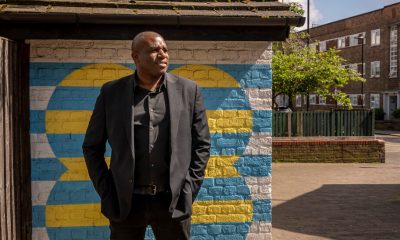News
Architect Creating Community Wins Prestigious Pritzker Prize

Riken Yamamoto, whose understated buildings quietly emphasize community and connectivity, has been awarded this year’s Pritzker Prize, architecture’s highest honor.
“Whether he designs private houses or public infrastructure, schools or fire stations, city halls or museums, the common and convivial dimension is always present,” the jury said in its citation announcing the award on Tuesday. “His constant, careful and substantial attention to community has generated public interworking space systems that incentivize people to convene in different ways.”
The desire to eliminate barriers between public and private realms was evident in Yamamoto’s first project, from 1977, a private open-air summer house in the woods of Nagano, Japan. “It has only a roof, no walls,” the 78-year-old architect recalled in a telephone interview from Yokohama, Japan, where he is based. “In the winter season, many of the animals are coming in.”
Similarly, a house in Kawasaki that Yamamoto designed the following year for two artists featured a pavilion-like room that could serve as a stage for performances, with living quarters underneath.
People continually asked, “Why Yamamoto makes such a strange house?” the architect said. “I explain the meaning every time: The community is the most important thing. Every family has a relation to community.”
The prestigious Pritzker award may be most closely associated with “starchitect” recipients such as Frank Gehry, Rem Koolhaas and Zaha Hadid. But in recent years, the jury has also recognized lower-profile designers, such as Francis Kéré of West Africa (2022), Anne Lacaton and Jean-Philippe Vassal (2021) and Yvonne Farrell and Shelley McNamara (2020).
Yamamoto’s public projects with his firm, Riken Yamamoto & Field Shop, have also been oriented around social interaction. Saitama Prefectural University, completed in 1999, features nine transparent buildings connected by terraces, allowing views from one classroom to another. “Distinguishing where one building ends and another begins is intentionally blurred,” the Pritzker says in its image book of Yamamoto’s work, “prompting an architectural language of its own.”
“His architecture clearly expresses his beliefs through the modular structure and the simplicity of its form,” the jury said in its citation. “Yet, it does not dictate activities, rather it enables people to shape their own lives within his buildings with elegance, normality, poetry and joy.”
The architect has combined transparency, functionality and accessibility in projects like the Future University, Hakodate (2000), whose underlying philosophy, “Open Space, Open Mind,” is reflected in Yamamoto’s open spaces. The classrooms, auditorium, and library are lined with glass walls, and open common areas are placed just outside of the transparent rooms on overlapping levels, encouraging students and teachers to work collaboratively.
For the Hiroshima West Fire Station (2000), Yamamoto constructed the facade, interior walls, and floors out of glass and made the atrium where firefighters train central to the building, encouraging passers-by to view and engage with those who are protecting the community.
When designing Jian Wai SOHO in 2004, nine residential towers, and four small home offices just east of Tiananmen Square in Beijing, Yamamoto said he successfully resisted the developer’s efforts to make the community gated. “I tried to make it open to the city,” the architect said.
In 2020, Yamamoto designed the Circle at Zurich Airport, an indoor-outdoor complex of hotels, restaurants, and stores featuring glass walls, windowed ceilings, and thin concrete columns.
Typically airports “have only souvenir shops, but this is completely different,” Yamamoto said in 2016, adding that his complex “is not for the airport itself. The planned city is for local residents of the Zurich region.”
Born in 1945 in China and trained in Japan, Yamamoto was 5 when he lost his father, an engineer, whose career he sought to emulate, eventually finding his way to architecture. At the age of 17, he visited Kohfukuji Temple, in Nara, one of Japan’s most famous Buddhist shrines, with a history dating to the seventh century. There he was captivated by the five-story pagoda symbolizing the elements of earth, water, fire, air, and space.
“It was very dark, but I could see the wooden tower illuminated by the light of the moon,” he said in the Pritzker biography, “and what I found at that moment was my first experience with architecture.”
In 1968, Yamamoto graduated from Nihon University, and three years later received a Master of Arts in Architecture from Tokyo University of the Arts. He founded his practice in 1973.
Yamamoto was influenced by his mentor, the architect Hiroshi Hara, designer of the Umeda Sky Building in Osaka, which features two towers connected at the top by glass bridges and is now considered a landmark. Yamamoto’s 2018 winning design for the Taoyuan Museum of Art in Taiwan comprises two buildings with green inclined roofs connected with an aboveground corridor.
Inspired by the theories of Hannah Arendt, Yamamoto is committed “to the belief that all spaces may enrich and serve the consideration of an entire community,” the Pritzker jury said, “and not just those who occupy them. He moved from single-family residences to social housing, such as the Hotakubo project in Kumamoto (1991), with 16 housing clusters arranged around a tree-lined central square. The design drew on traditional Japanese “machiya” (townhouses) and Greek “oikos” (households) — living arrangements that foster collectivism.
He went on to create larger public projects, like Tianjin Library in China (2012), which incorporates bookshelves into an intersecting grid of wall beams. Stone louvers on the exterior mitigate dust and achieve transparency.
Yamamoto has also made an effort to personally give back, collaborating with the architects Toyo Ito and Kazuyo Sejima on disaster-relief community housing following the catastrophic earthquake and tsunami that struck Tohoku in 2011 and caused a meltdown at the Fukushima Daiichi nuclear plant. And in 2018, he instituted the Local Republic Award, to honor young architects.
“For some reason, we’re educated to accept that an architect must be good and arrogant, leading us to wrongly believe arrogance is a condition for goodness,” Graham McKay, an architect and professor, wrote in his “Misfits’ Architecture” blog in 2021. “I’d like to use Riken Yamamoto and his career to illustrate that that’s not true.”
Often composed of essential, everyday materials like aluminum, glass, concrete, and wood, Yamamoto’s buildings don’t call attention to themselves. But their priorities come through loud and clear. “My architecture is a strong message,” Yamamoto said, “to make something in relation to other people.”
News
University of Wisconsin-Milwaukee and Protesters reach an agreement to dismantle encampment

Protesters at the University of Wisconsin-Milwaukee have agreed to end their pro-Palestinian encampment following an agreement reached with the school, university officials announced on Sunday. The encampment, which had been in place for two weeks, will be dismantled by Tuesday, marking the end of what was believed to be the last standing encampment at a Wisconsin college.
University officials had allowed the encampment to remain on a patch of lawn between Mitchell Hall and a busy thoroughfare on the campus’s southern boundary, opting not to involve law enforcement. This approach differed from the response at the University of Wisconsin-Madison, where police were called in to remove tents after negotiations fell through. Despite initial efforts to disband the encampment, Wisconsin-Madison eventually reached an agreement with protesters to voluntarily dismantle the camp prior to commencement ceremonies.
Chancellor Mark Mone of Wisconsin-Milwaukee stated last Wednesday that the university had exhibited “the widest possible amount of patience and restraint.” However, he also cautioned that patience was wearing thin and hinted at potential action by the school. Following discussions with the UWM Popular University for Palestine Coalition, the university agreed to advocate for a cease-fire between Israel and Hamas, condemn the destruction of schools and universities in Gaza by Israeli forces, and hold meetings with protest leaders regarding university investments.
Additionally, the university pledged to urge the Water Council, a Milwaukee organization of water technology companies, to sever connections with two Israeli government-owned entities, Mekorot and the Israel Innovation Authority. Chancellor Mone serves as the treasurer on the Water Council’s board of directors.
In return for these commitments, the protesters agreed to dismantle the encampment beginning on Sunday and completing the process by Tuesday. They also agreed not to disrupt the university’s commencement ceremonies scheduled for Sunday. In a statement, the protesters expressed their satisfaction with the agreement, stating, “After hard fought edits and careful consideration by the coalition, we determined we had obtained all possible benefits from the encampment.”
The resolution of the encampment at the University of Wisconsin-Milwaukee represents a successful outcome of negotiations between university officials and protesters. By reaching a compromise that addresses the concerns of both parties, a peaceful resolution has been achieved, allowing for the encampment to be taken down without incident.























